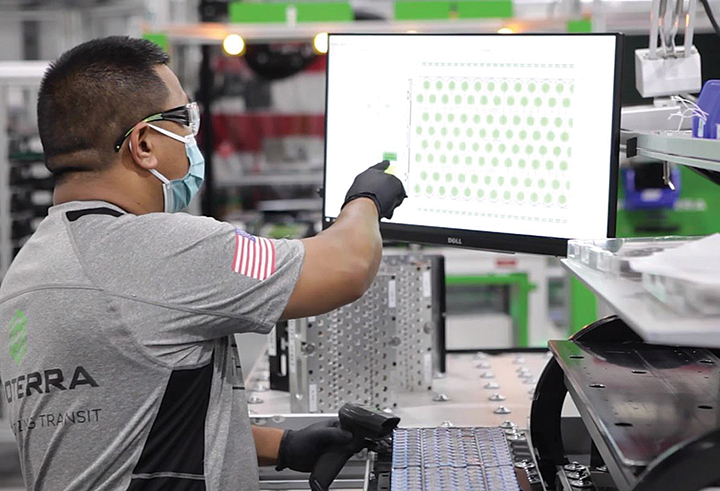
Fleet operators are no longer taking small steps to reduce emissions from their vehicles – they are taking major strides in the transition to zero emissions. Cities are moving far beyond the pilot stages, deploying large fleets of zero-emission buses (ZEBs), and putting emissions reduction plans into action.
There are many key elements in making this a successful shift for our communities, but one rises to the top with critical importance: the battery. At the heart of the clean energy ecosystem, batteries must be safe, efficient, high-performing and cost effective. That’s why years ago Proterra went beyond manufacturing buses and assembled a team of battery engineers with unparalleled experience in EV technology, bringing battery manufacturing in-house. It was a necessary step to meet the needs of transit vehicles and enable the transition to ZEBs without sacrificing on performance.

Built from the cell level up for heavy-duty EVs
To meet the needs of heavy-duty vehicle fleets, we need batteries that can hold high amounts of energy, charge fast, operate safely, handle many years of repeated use, and are not too heavy or cost prohibitive. Lithium ion has been the predominant chemistry of choice for electric vehicle batteries since it checks all the boxes, has been proven in commercial use for decades, and lithium-ion cells have shown substantial increases in energy density in recent years.
A decade ago, electric buses had about an 1/8th of the energy on board that a Proterra bus contains today, now holding up to 738 kWh. Increasing the energy density in battery packs has had a significant impact on extending the range of electric buses, with vehicles such as the ZX5 Max now able to go over 300 miles on a single charge.
Enabling state-of-the-art safety
In addition to chemistry, another important factor to consider with battery cells is form factor. Proterra batteries contain cylindrical lithium-ion battery cells, which have been standardized and are produced by Tier 1 suppliers around the globe.
The cylindrical cells coupled with Proterra’s battery pack architecture enable a state-of-the-art safety feature called cell-level passive propagation resistance (PPR). With PPR, in the rare event of a single battery cell failure with a thermal event, the defective cell would be isolated, and the battery pack architecture would mitigate risk of complications spreading throughout the entire pack. Proterra® batteries include multiple safety features, which are both preventative (“passive”) and reactionary (“active”).
An enclosure you can count on
Extremely safe batteries call for extremely durable enclosures so they can withstand the tough environments that transit vehicles encounter daily. The enclosure used for Proterra batteries not only has a protective, ruggedized commercial grade housing made with ballistic grade materials, it has also been rigorously tested using criteria validated by a third party.
Designed and manufactured in the USA at our battery production facilities, Proterra batteries have undergone tests performed to account for possible incidents such as road debris striking the pack, a defective cell, impact from a street manhole cover exploding, vehicle collision, a coolant flood, and more. Our engineering team aims to ensure Proterra batteries are protected against any single point of failure and tested to the highest safety standards.
Smart, connected, protected
Since batteries are essential to the entire connected EV ecosystem, it’s also important to have a smart Battery Management System (BMS) that safely controls the amount of energy drawn from the battery during operation and limits the usable energy as needed to preserve the battery. Usable energy in a battery pack needs to be limited to provide a more consistent and predictable energy draw over its lifetime. If a battery is charged and discharged to its full capacity, it will degrade faster over time, resulting in less vehicle range than expected.
Ready to scale
Heavy-duty commercial EV batteries from Proterra are not just out on the roads in our ZX5 transit buses and coach buses like the Van Hool CX45E from our partners at ABC Companies, they are also going into school buses, shuttles, trucks, construction equipment and more. Now that EVs have passed the tipping point and the future is bright for transit electrification, it’s more important than ever to have state-of-the-art battery technology powering this transition, so we can all keep safety at the forefront without sacrificing on performance.
John Walsh serves as the Chief Commercial Officer at Proterra. Visit www.proterra.com for more information.
